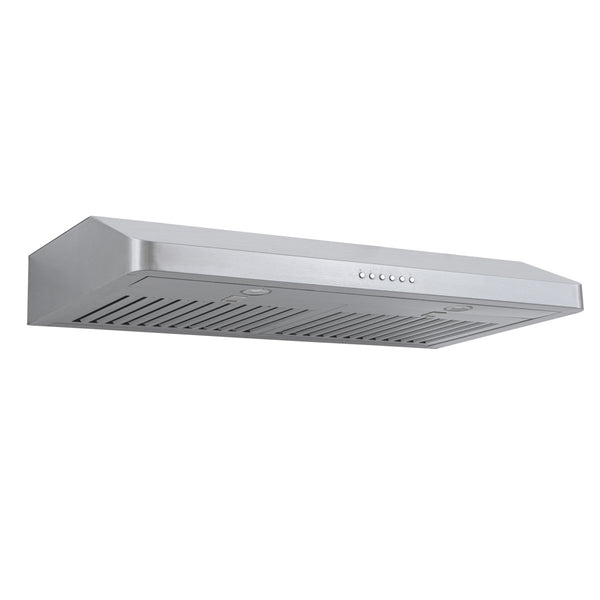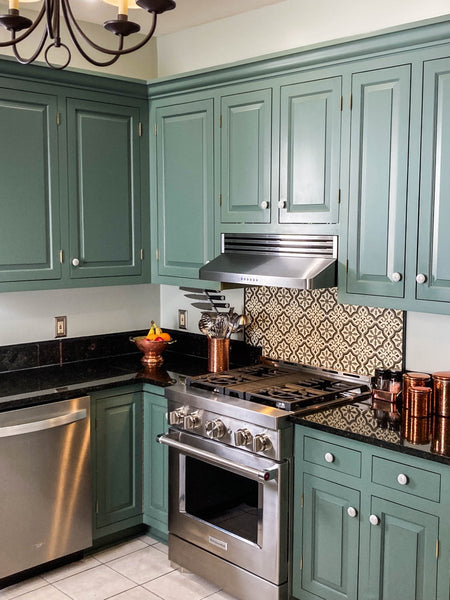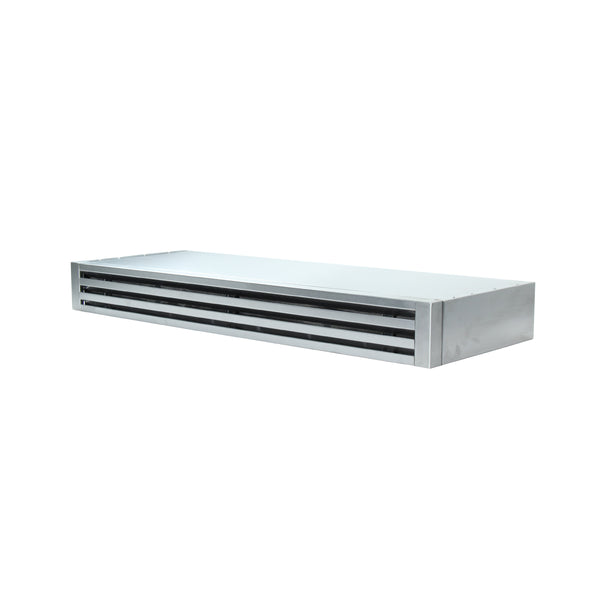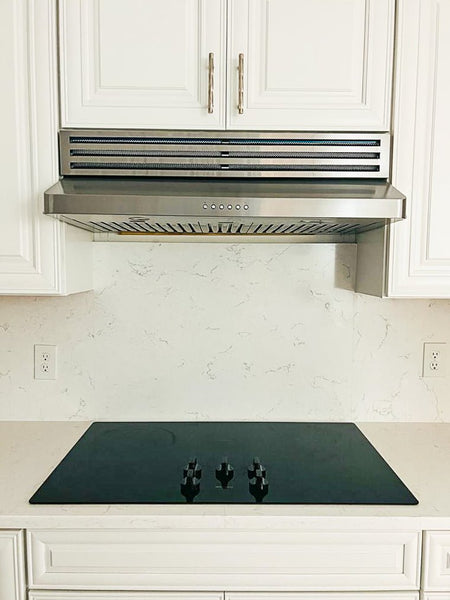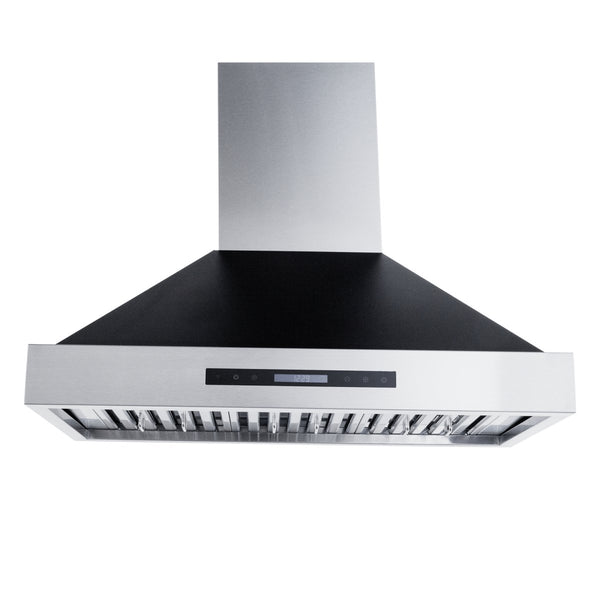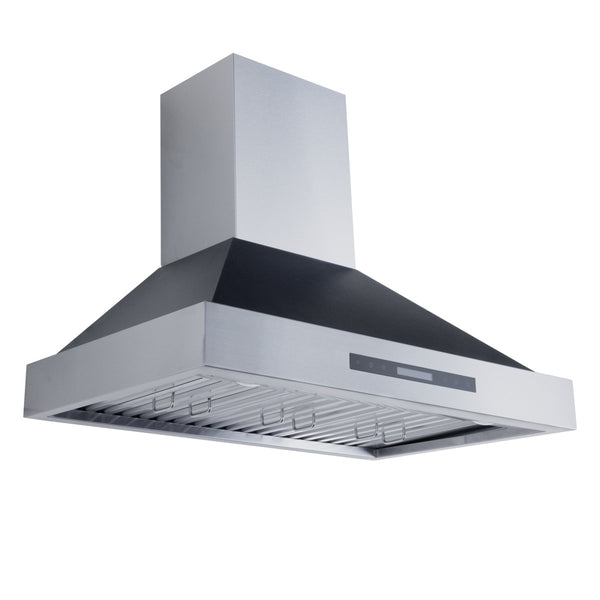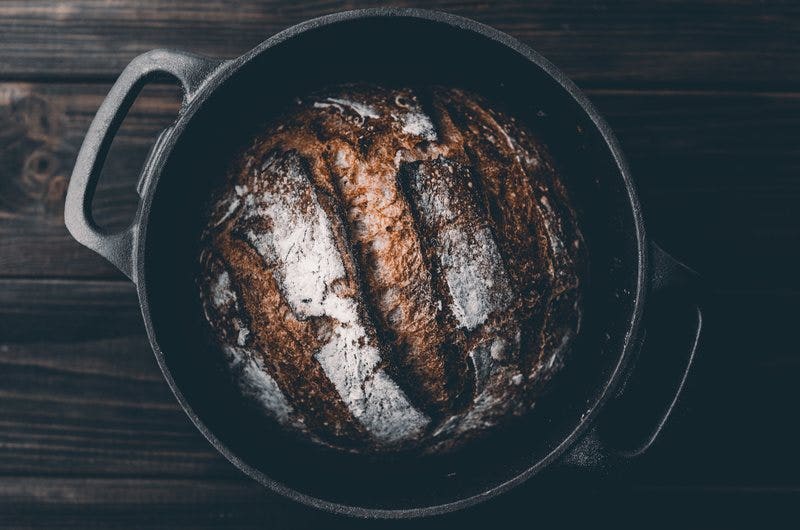When your cast iron pan arrives, one of the first things you should do is season it in your kitchen. Otherwise, your food will stick to the pan when cooking in it. Additionally, the pan will rust and leach iron into your food.
The two most common ways to season your cast iron skillet are in the oven or on the stovetop. Both methods are great. It’s up to you which one you want to try. Seasoning your cast iron skillet on the stove is more hands-off and doesn’t require supervision.
If your pan has a wooden handle, skip to the stovetop method. The wooden handle could catch fire in the oven!
How to Season a Cast Iron Skillet in the Oven

What You Need
- Dish towel or rag
- Oil with a high smoke point (peanut oil, canola oil, etc.)
- Oven
- Sink
- Baking sheet or aluminum foil
- Scrubby sponge, steel wool, or another abrasive scrubber
1. Clean your pan thoroughly with an abrasive scrubber.
When your cast iron pan arrives from the factory, it often has a factory coating that needs to be removed before seasoning. Scrub the pan with a scrubby sponge or steel wool to completely remove this coating.
After you season your cast iron cookware, we don’t recommend using abrasive scrubbers to clean cast iron. But in this case, you are preparing the pan for seasoning, So scrub away!
2. Dry the pan thoroughly with a towel, then on your stovetop.
Before seasoning, you want to remove all moisture from the pan. After drying it with a towel, heat the pan up for a couple of minutes to remove the last remaining water from it.
3. Apply oil to the pan: top, bottom, sides, and handle.
For this step, start with about a quarter-sized dab of oil. Use a clean towel to rub the oil evenly on the inside and outside of your cast iron pan. The pan should have a nice shine to it after you’ve applied the oil.
Be careful not to use too much oil. Otherwise, after seasoning, your pan may get sticky. If this happens, you’ll have to remove the seasoning and reseason the pan.
Use an oil with a high smoke point (~400+º). This includes canola oil, peanut oil, and avocado oil, among others. Keep in mind that olive oil has a smoke point of between 350º - 400º. If you cook often at high heat, it’s best to use a different type of oil.
Don’t forget the handle! Remember, if your pan has a wooden handle, you can’t use this method. Scroll down and learn how to season cast iron on the stovetop!
4. Preheat your oven to 450º.
5. Once preheated, set your cast iron skillet in the oven, upside down.
This will allow any excess oil to drip off the pan instead of pooling inside the bottom.
6. Place a baking sheet or layer of aluminum foil below the pan to catch any oil drips.
7. Bake the skillet for one hour.
8. Let the pan cool in the oven before removing it.
In most cases, one round of seasoning in the oven is enough. If you want to strengthen the layer of seasoning, you can apply oil to the pan again and place it in the oven for another hour.
How to Season a Cast Iron Skillet Without an Oven (On the Stovetop)

The first steps to season your skillet on the stovetop are the same as seasoning it in the oven. The stovetop method takes significantly less time to season your cast iron pan.
What You Need
- Stove
- Sink
- Scrubby sponge or steel wool
- Dish towel
- Canola or avocado oil
1. Clean your pan thoroughly with an abrasive scrubber.
When your cast iron pan arrives from the factory, it often has a factory coating that needs to be removed before seasoning. Scrub the pan with a scrubby sponge or steel wool to completely remove this coating.
After you season your cast iron cookware, we don’t recommend using abrasive scrubbers to clean cast iron. But in this case, you are preparing the pan for seasoning, So scrub away!
2. Dry the pan thoroughly with a towel, then on your stovetop.
Before seasoning, you want to remove all moisture from the pan. After drying it with a towel, heat the pan up for a couple of minutes to remove the last remaining water from it.
3. Apply oil to the pan: top, bottom, sides, and handle.
For this step, start with about a quarter-sized dab of oil. Use a clean towel to rub the oil evenly on the inside and outside of your cast iron pan. The pan should have a nice shine to it after you’ve applied the oil.
Be careful not to use too much oil. Otherwise, after seasoning, your pan may get sticky. If this happens, you’ll have to remove the seasoning and reseason the pan.
Use an oil with a high smoke point (~400+º). This includes canola oil, peanut oil, and avocado oil, among others. Keep in mind that olive oil has a smoke point of between 350º - 400º. If you cook often at high heat, it’s best to use a different type of oil.
Don’t forget the handle!
4. Preheat your skillet over medium heat for about 10 minutes.
It’s important to preheat your skillet so that it gets hot enough for the layer of oil to polymerize.
5. Once preheated, leave the pan over medium heat for 10 more minutes.
If you notice the pan is getting dry, wipe the pan again with a thin layer of oil. If the oil starts to smoke, the process is working. Turn down the heat if heavy smoke persists.
6. Let the pan cool on the stovetop.
For your safety, don’t try to put the pan away while it’s hot. Definitely avoid cooling it with water as that can cause cast iron to crack or warp.
To strengthen the layer of seasoning, you can repeat step three and place your pan on medium to high heat for 10 minutes a second time.

How to Season a Rusty Cast Iron Skillet
To season a rusty cast iron skillet, you first have to remove the rust. Check out our complete guide on removing rust from cast iron here. Once that’s done you can follow one of the seasoning methods above.
Should I season the outside of a cast iron pan?
Yes, season the outside of your cast iron pan to protect it from rust. Every part of an unseasoned pan is susceptible to rust – even the outside and the bottom. So, it’s important to coat the entire surface with oil.
Frequently Asked Questions on Cast Iron
What temperature can I season cast iron?
Season cast iron at 450º to 500º Fahrenheit. Let the oven preheat completely before placing your pan inside. When seasoning cast iron on the stovetop, let the pan preheat for five to 10 minutes over medium heat. Then, leave the pan over medium heat for an additional 10 minutes to allow the oil to polymerize.
Can I season a cast iron pan with olive oil?
It’s best to use oil with a higher smoke point like canola or peanut oil. Olive oil starts to smoke around 350º. The oil may burn off during the seasoning process. If you cook at high heat often, the layer of seasoning will break down more quickly compared to other oils.
How often should I season cast iron?
You should season your cast iron about twice a year. If you cook acidic foods frequently, you may need to season your pan more often.
What is the best oil to season a cast iron skillet?
One of the best oils to season your cast iron skillet is peanut oil. Grapeseed or avocado oil also work great because of their high smoke points.
How can you tell if cast iron is seasoned?
A seasoned cast iron pan will look a little darker than it did out of the box. You’ll notice a nice glossy finish (the layer of oil) coating the entire pan.
Do you season cast iron after every use?
No, you only need to season your skillet about twice a year. To protect the layer of seasoning, it helps to add a thin layer of oil to your cast iron before storing it.
Why is my cast iron sticky after seasoning?
Your cast iron skillet is sticky because you used too much oil to season the pan. You can either scrub the seasoning off and reseason the pan or place it in the oven for an hour at 450º F. High heat helps bake the oil into the pan, toughening the layer of seasoning.
Can you use PAM to season cast iron?
It’s not recommended to use PAM to season cast iron. Non-stick sprays have artificial ingredients and additives that you may not want in your food. Some spray oils have smoke points hotter than 500º, so the oil won’t polymerize after baking in the oven. For an easy, trouble-free process, use avocado or canola oil to season your pan.
Can you use Crisco to season cast iron?
You can use Crisco to season cast iron. It is a cheap alternative to other liquid oils. Like olive oil, it has a relatively low smoke point of about 360º. It’s recommended to preheat the pan in your oven at 200º for about 10 minutes. Apply the Crisco once the pan is preheated. It will melt into the pan and readily absorb the seasoning.
What removes seasoning from cast iron?
Some activities may remove a bit of seasoning, such as cooking acidic foods, using excessive heat, or scrubbing with abrasive utensils or scouring pads. That's why our simple cleaning steps have you rub oil into your pan after each use to ensure the seasoning remains for quality cooking.
Hopefully our guide on seasoning your cast iron skillet helped you out! If you’d like to learn more about cast iron, check out the articles below.
Related Articles
How to Deglaze a Cast Iron Skillet
What size cast iron skillet should I buy?
How to Remove Rust from Cast Iron
